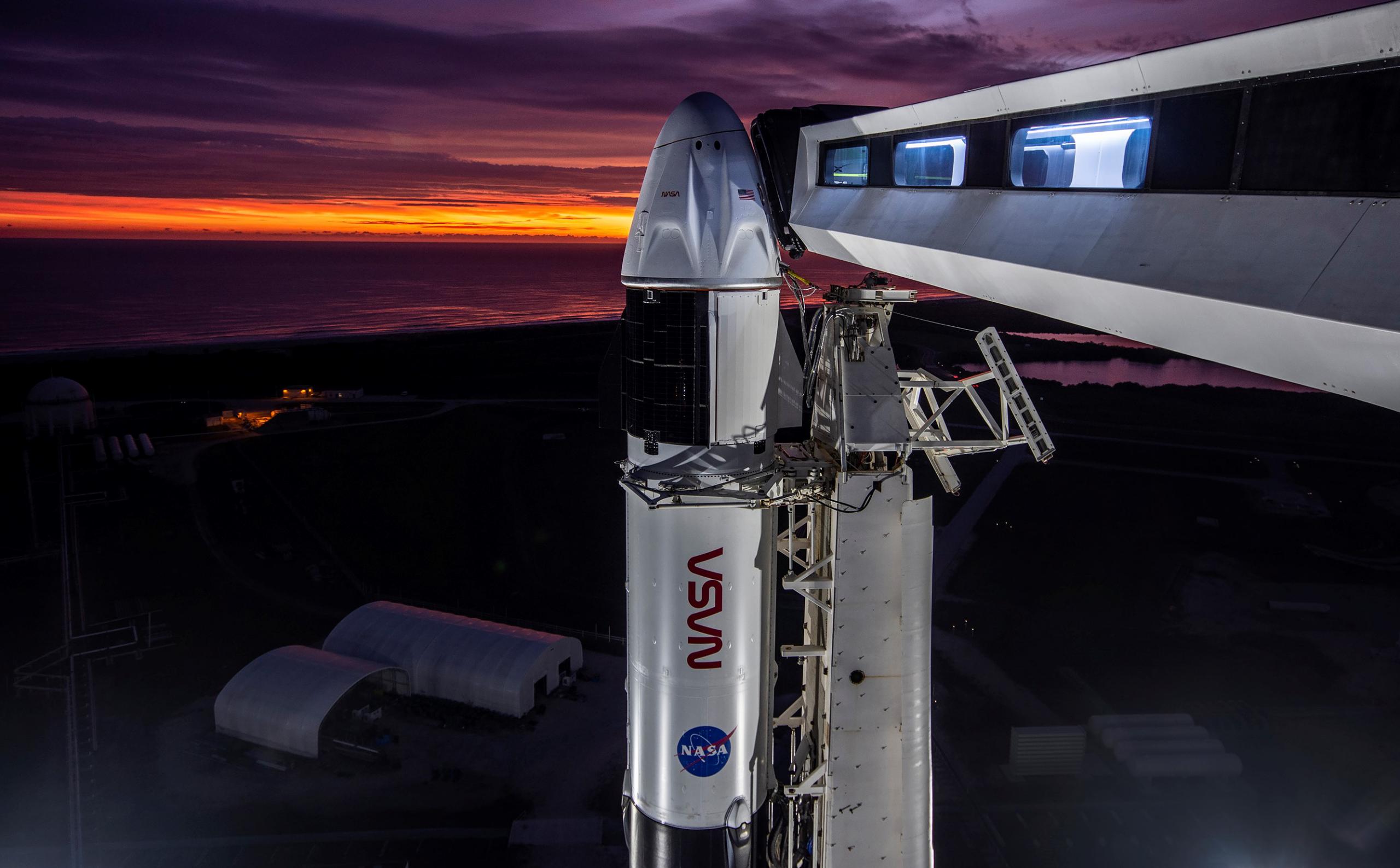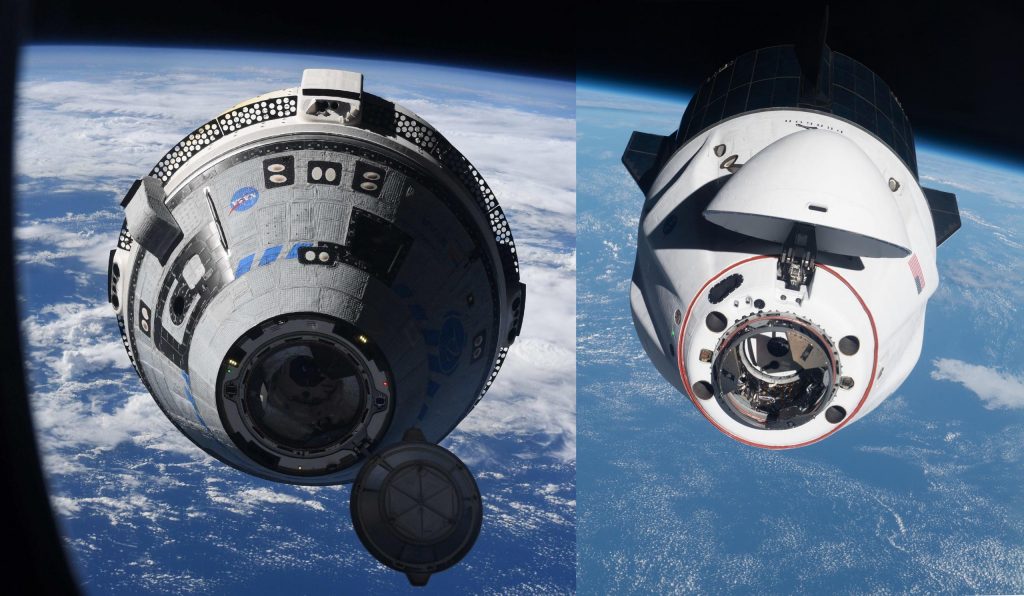

News
SpaceX’s NASA Crew Dragon launch manifest doubles in three months
NASA says it will soon award SpaceX another five Crew Dragon astronaut transport contracts after purchasing three extra missions from the company on February 28th.
That June 1st announcement means that NASA has more than doubled the number of operational Crew Dragon astronaut launches planned between 2020 to the end of 2030 in the last three months – a decision that represents another major SpaceX upset over Boeing. In reality, NASA has simply made some cold and rational calculations about its two Commercial Crew providers and – with no ill intent – made far-reaching decisions to preemptively secure its astronauts’ access to the International Space Station (ISS) for the rest of this decade. Intentional or not, however, the optics of those decisions speak volumes.
When NASA awarded Boeing and SpaceX their original $4.2 billion and $2.6 billion Commercial Crew Transportation Capability (CCtCap) contracts in 2014, the agency’s goal (or hope) was for both providers to complete the development of their Starliner and Crew Dragon spacecraft in roughly the same amount of time. Boeing and SpaceX would have then taken turns, each performing one six-month crew transportation mission per year and ensuring redundant access to the ISS for the rest of its life.
More realistically, the general assumption was that Boeing – an ancient aerospace company with half a century of spaceflight experience – would smoothly complete Starliner while SpaceX – a 12-year-old startup – would struggle to push Crew Dragon across the finish line. Of course, exactly the opposite proved to be true. For what would ultimately become (to NASA) $3.15 billion to Boeing’s $4.95 billion and development and test flight costs of $1.2 billion to Boeing’s $2.2 billion, SpaceX completed its first successful uncrewed and crewed Crew Dragon test flights in March 2019 and May 2020. In contrast, Boeing’s first uncrewed Starliner launch attempt nearly ended in catastrophe in December 2019. A second July 2021 attempt at that mission was prevented from launching by unrelated technical difficulties. Only on May 25th, 2022 did Boeing finally complete the equivalent of Crew Dragon’s March 2019 Demo-1 test flight.
NASA’s February 28th purchase of three more SpaceX Crew Dragon missions was unsurprising. The future of Starliner was still unclear and the Dragon missions it was purchasing could be needed as early as 2023 if Boeing’s spacecraft was not ready in time. The timing of NASA’s notice of intent to purchase another five Crew Dragon missions one week after the end of Boeing’s mostly successful OFT-2 test flight, however, is somewhat surprising. Instead of throwing Boeing a bone after its long-awaited success and somewhat balancing the scales between its two Commercial Crew providers, NASA has ultimately decided to purchase more than twice as many crew missions from SpaceX.
Following NASA and SpaceX’s successful Crew-4 launch last month, the space agency needs 16 more six-month transport missions from SpaceX and Boeing to ensure astronaut access to the ISS between now and late 2030. NASA has issued its intent to perform up to 14 operational Crew Dragon missions and up to 6 Starliner missions (via Boeing’s original contract). Subtracting the 4 missions SpaceX has completed or is in the midst of completing, NASA will soon have all the contracts it needs to crew the ISS until the end of 2030 without purchasing a single extra mission from Boeing.

As a result, barring surprises, SpaceX will likely be responsible for launching 70% of all NASA and ESA astronauts from late 2020 to the end of 2030, while Boeing will be tasked with carrying the remaining 30%. A less likely Commercial Crew outcome would have been hard to imagine in 2014.
News
Tesla cleared in Canada EV rebate investigation
Tesla has been cleared in an investigation into the company’s staggering number of EV rebate claims in Canada in January.

Canadian officials have cleared Tesla following an investigation into a large number of claims submitted to the country’s electric vehicle (EV) rebates earlier this year.
Transport Canada has ruled that there was no evidence of fraud after Tesla submitted 8,653 EV rebate claims for the country’s Incentives for Zero-Emission Vehicles (iZEV) program, as detailed in a report on Friday from The Globe and Mail. Despite the huge number of claims, Canadian authorities have found that the figure represented vehicles that had been delivered prior to the submission deadline for the program.
According to Transport Minister Chrystia Freeland, the claims “were determined to legitimately represent cars sold before January 12,” which was the final day for OEMs to submit these claims before the government suspended the program.
Upon initial reporting of the Tesla claims submitted in January, it was estimated that they were valued at around $43 million. In March, Freeland and Transport Canada opened the investigation into Tesla, noting that they would be freezing the rebate payments until the claims were found to be valid.
READ MORE ON ELECTRIC VEHICLES: EVs getting cleaner more quickly than expected in Europe: study
Huw Williams, Canadian Automobile Dealers Association Public Affairs Director, accepted the results of the investigation, while also questioning how Tesla knew to submit the claims that weekend, just before the program ran out.
“I think there’s a larger question as to how Tesla knew to run those through on that weekend,” Williams said. “It doesn’t appear to me that we have an investigation into any communication between Transport Canada and Tesla, between officials who may have shared information inappropriately.”
Tesla sales have been down in Canada for the first half of this year, amidst turmoil between the country and the Trump administration’s tariffs. Although Elon Musk has since stepped back from his role with the administration, a number of companies and officials in Canada were calling for a boycott of Tesla’s vehicles earlier this year, due in part to his association with Trump.
News
Tesla Semis to get 18 new Megachargers at this PepsiCo plant
PepsiCo is set to add more Tesla Semi Megachargers, this time at a facility in North Carolina.

Tesla partner PepsiCo is set to build new Semi charging stations at one of its manufacturing sites, as revealed in new permitting plans shared this week.
On Friday, Tesla charging station scout MarcoRP shared plans on X for 18 Semi Megacharging stalls at PepsiCo’s facility in Charlotte, North Carolina, coming as the latest update plans for the company’s increasingly electrified fleet. The stalls are set to be built side by side, along with three Tesla Megapack grid-scale battery systems.
The plans also note the faster charging speeds for the chargers, which can charge the Class 8 Semi at speeds of up to 1MW. Tesla says that the speed can charge the Semi back to roughly 70 percent in around 30 minutes.
You can see the site plans for the PepsiCo North Carolina Megacharger below.

Credit: PepsiCo (via MarcoRPi1 on X)

Credit: PepsiCo (via MarcoRPi1 on X)
READ MORE ON THE TESLA SEMI: Tesla to build Semi Megacharger station in Southern California
PepsiCo’s Tesla Semi fleet, other Megachargers, and initial tests and deliveries
PepsiCo was the first external customer to take delivery of Tesla’s Semis back in 2023, starting with just an initial order of 15. Since then, the company has continued to expand the fleet, recently taking delivery of an additional 50 units in California. The PepsiCo fleet was up to around 86 units as of last year, according to statements from Semi Senior Manager Dan Priestley.
Additionally, the company has similar Megachargers at its facilities in Modesto, Sacramento, and Fresno, California, and Tesla also submitted plans for approval to build 12 new Megacharging stalls in Los Angeles County.
Over the past couple of years, Tesla has also been delivering the electric Class 8 units to a number of other companies for pilot programs, and Priestley shared some results from PepsiCo’s initial Semi tests last year. Notably, the executive spoke with a handful of PepsiCo workers who said they really liked the Semi and wouldn’t plan on going back to diesel trucks.
The company is also nearing completion of a higher-volume Semi plant at its Gigafactory in Nevada, which is expected to eventually have an annual production capacity of 50,000 Semi units.
Tesla executive teases plan to further electrify supply chain
News
Tesla sales soar in Norway with new Model Y leading the charge
Tesla recorded a 54% year-over-year jump in new vehicle registrations in June.

Tesla is seeing strong momentum in Norway, with sales of the new Model Y helping the company maintain dominance in one of the world’s most electric vehicle-friendly markets.
Model Y upgrades and consumer preferences
According to the Norwegian Road Federation (OFV), Tesla recorded a 54% year-over-year jump in new vehicle registrations in June. The Model Y led the charge, posting a 115% increase compared to the same period last year. Tesla Norway’s growth was even more notable in May, with sales surging a whopping 213%, as noted in a CNBC report.
Christina Bu, secretary general of the Norwegian EV Association (NEVA), stated that Tesla’s strong market performance was partly due to the updated Model Y, which is really just a good car, period.
“I think it just has to do with the fact that they deliver a car which has quite a lot of value for money and is what Norwegians need. What Norwegians need, a large luggage space, all wheel drive, and a tow hitch, high ground clearance as well. In addition, quite good digital solutions which people have gotten used to, and also a charging network,” she said.
Tesla in Europe
Tesla’s success in Norway is supported by long-standing government incentives for EV adoption, including exemptions from VAT, road toll discounts, and access to bus lanes. Public and home charging infrastructure is also widely available, making the EV ownership experience in the country very convenient.
Tesla’s performance in Europe is still a mixed bag, with markets like Germany and France still seeing declines in recent months. In areas such as Norway, Spain, and Portugal, however, Tesla’s new car registrations are rising. Spain’s sales rose 61% and Portugal’s sales rose 7% last month. This suggests that regional demand may be stabilizing or rebounding in pockets of Europe.
-

 Elon Musk2 weeks ago
Elon Musk2 weeks agoTesla investors will be shocked by Jim Cramer’s latest assessment
-

 Elon Musk2 days ago
Elon Musk2 days agoxAI launches Grok 4 with new $300/month SuperGrok Heavy subscription
-

 Elon Musk4 days ago
Elon Musk4 days agoElon Musk confirms Grok 4 launch on July 9 with livestream event
-

 News1 week ago
News1 week agoTesla Model 3 ranks as the safest new car in Europe for 2025, per Euro NCAP tests
-

 Elon Musk2 weeks ago
Elon Musk2 weeks agoA Tesla just delivered itself to a customer autonomously, Elon Musk confirms
-

 Elon Musk1 week ago
Elon Musk1 week agoxAI’s Memphis data center receives air permit despite community criticism
-

 News2 weeks ago
News2 weeks agoXiaomi CEO congratulates Tesla on first FSD delivery: “We have to continue learning!”
-

 Investor's Corner2 weeks ago
Investor's Corner2 weeks agoTesla gets $475 price target from Benchmark amid initial Robotaxi rollout

















